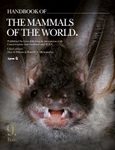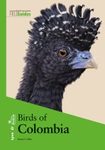Field / Identification Guide
By: Chong Leong Puan(Author), Geoffrey Davison(Author), Kim Chye Lim(Author)
413 pages, colour illustrations, colour distribution maps
![Birds of Malaysia Birds of Malaysia]()
Click to have a closer look
About this book
Customer reviews
Biography
Related titles
About this book
The country of Malaysia comprises two halves separated by the South China Sea, the Peninsula and East Malaysia, the latter made up of Sabah and Sarawak. Most of the many Bornean endemic birds can be found in the two latter states, including a dazzling array of pheasants, frogmouths, trogons, pittas, thrushes, and two of the most recently described birds in the world, Spectacled Flowerpecker and Cream-eyed Bulbul, both named to science only in 2019.
The peninsula boasts some of the best lowland forest reserves in the Sundaic region, as well as a variety of highland endemics at famous hill station birding sites like Fraser's Hill. Three monospecific and particularly striking families, the Pityriasidae (Bornean Bristlehead), Platylophidae (Crested Jay) and Eupetidae (Rail-babbler), are best searched for in Malaysia, making the country an essential destination for 'family collectors'.
Whether you are planning a comprehensive birding tour of the Peninsula or northern Borneo, or only to 'escape' for a few days while in Singapore, this new guide covers it all.
Customer Reviews
Biography
Chong Leong Puan first learned about birdwatching about 20 years ago, and has 13 years of experience in handling mist-netted birds. After completing his PhD in Wildlife Ecology from the University of Queensland, Australia, Puan continues his research on Malaysian birds with respect to community ecology, behaviour, vocalisations, habitat requirements, and population genetics. He has also been trained in raptor handling and migration monitoring in Wisconsin and Pennsylvania, USA. He is currently an Associate Professor at the Faculty of Forestry and Environment, Universiti Putra Malaysia, and is the Malaysian representative for the Asian Raptor Research and Conservation Network.
Geoffrey Davison obtained his PhD from the University of Malaya. He subsequently lectured at the National University of Malaysia, with research on tropical birds, mammals and the effects of large infrastructure projects. With WWF-Malaysia he then contributed to national strategies on conservation of natural resources and on ecotourism development, followed by six years with WWF-Malaysia in Sabah. More recently he has been a staff member of the National Parks Board, Singapore.
Kim Chye Lim took early retirement to pursue further his interest in birds, moving on from birding to being involved in bird-related work. After a stint in Australia, where he volunteered in shorebird projects and qualified as a bird-bander, he returned to Malaysia and served with the Malaysian Nature Society as its Ornithological Officer, focusing on hornbill conservation and raptor migration projects. He later left the Society and, with the benefit of 30 years of association with the birds of Malaysia, carried out avifaunal surveys as well as biodiversity assessments for environmental consultants and NGOs. Kim Chye has collaborated in two other publications, Birds of Perak: Peninsular Malaysia and Where to See Them and Field Guide to Raptors of Asia, Volume 1: Migratory Raptors of Oriental Asia.
Field / Identification Guide
By: Chong Leong Puan(Author), Geoffrey Davison(Author), Kim Chye Lim(Author)
413 pages, colour illustrations, colour distribution maps
"[...] Writing this review in the midst of a pandemic seems a little surreal, but it is worth pointing out that, to date, Malaysia and Singapore have done a remarkable job in curtailing the spread of COVID-19 within their countries, and are likely to be welcoming tourists back well before many other popular birding destinations become safe to visit again. Hence, if you are making plans for some post-pandemic birding, Malaysia is certainly a destination to consider, and for anyone visiting this alluring country, Birds of Malaysia: Covering Peninsular Malaysia, Malaysian Borneo and Singapore is certainly now the best birding guide to take with you, combining practicality with an up-to-date text and a user-friendly interface. It should be added that not only does Malaysia have a very high standard of tourist infrastructure, but it boasts some of the best and most-easily accessible protected areas in the Sundaic region, including Taman Negara National Park, Fraser’s Hill, Danum Valley, the Kinabatangan River, and Mount Kinabalu National Park, as well as some of the best forest birding on the planet, placing both Peninsular Malaysia and the Bornean state of Sabah among the most desirable destinations to visit within the Oriental Region."
– Frank Lambert (06-10-2020), read the full review at The Birder's Library




















![Ageing & Sexing of Migratory East Asian Passerines [English / Chinese]](http://mediacdn.nhbs.com/jackets/jackets_resizer_medium/25/250760.jpg?height=150&width=115)














